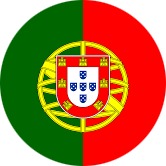Understanding customs documentation is crucial for importers and exporters, as they remain liable for the accuracy of the information submitted, even when managed by a third party. This Customs Procedures and Documentation training course provides a thorough and detailed examination of the essential information required for importing and exporting goods, ensuring that participants are aware of their responsibilities.
Additionally, the course explores the differences between EU and non-EU trade, highlighting specific regulations and requirements relevant to each. This comprehensive approach equips attendees with the knowledge needed to navigate customs processes effectively and comply with international trade regulations.
This training course will feature:
- The change from CHIEF to CDS
- Product Classification – Tariff Code/Commodity Codes
- Customs Procedure Codes (CPC) and what they do
- Import and Export Documentation
- Certificates of Origin
Training Objectives
By the end of this training course, participants will be able to:
- Understand of the Role of Customs Documentation
- Understanding of the Customs Procedures
- Explain the EORI Number
- Explain the Free Circulation
- Explain the SAD C88
Course Outline
Day One: Customs Procedures and Documentation
- Introduction to Customs Procedures and Documentation
- Rules of Origin and Intra EC Trade
- Customs Procedures and The International Trade Tariff
- Which Organisation Regulates the Rules of Trade Between Nations?
- Understand What Wholly Produced Goods Means
- What is an Authorized Economic Operator?
Day Two: Essential Customs Forms
- Understand When an Exporter Would Issue an EUR1 Form
- Usage of the Free Circulation
- VAT Responsibilities with Regard to Intra-EU Trade
- Explanation of the SAD C88
- The Change from CHIEF to CDS
- Product Classification
- Tariff Code/Commodity Codes
Day Three: Explanation of Key Import and Export Documentation
- Key Information for Both Import and Export Entries
- Documents Used as Proof of Removal of Goods
- What Documents can be Used as Proof of Export
- Certificates of Origin (Preference & Non-Preference)
- Compliance with Rules of Origin
- Commercial Invoices
Day Four: Customs Systems
- Generalized System of Preferences (GSP)
- WTO Methods of Valuation for Import
- AEO - Benefits of Being an Authorized Economic Operator
- Understand Customs Relief Schemes Available to Imports and Exporters
- Use of Customs Notices
- Customs Procedure Codes (CPC)
Day Five: Valuation – Explanation of the Main Methods and Their Application
- The Transaction Value Method
- The Transaction Value of Identical Goods
- The Transaction Value of Similar Goods
- The Deductive Method (price per unit)
- The Computed Method
- The Fall-Back Method (available data)

























































